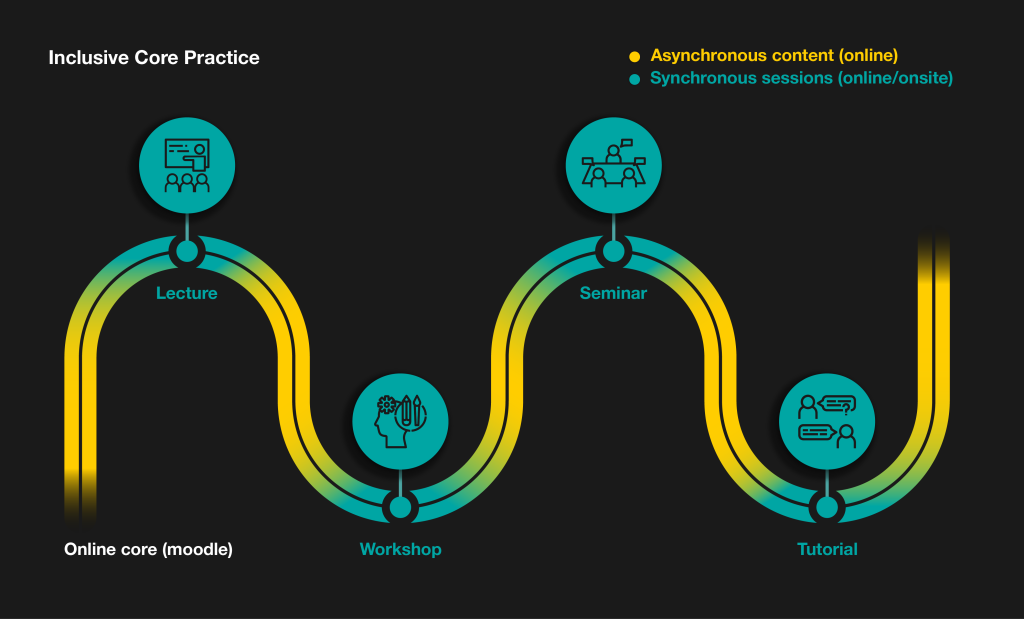In this guide:
- About this guide
- What is inclusive core practice?
- Moodle as the core platform for Inclusive Practice
- Designing teaching for Inclusive Core Practice
About this guide
This guide outlines UAL’s core approach to inclusive teaching. The guidance will help you improve how your course is organised and create a more inclusive environment, providing the predictability and structure students need to plan their studies into busy and complex lives
This approach helps us to:
- support students’ wellbeing, engagement, retention and attainment.
- fulfil our Equality Act 2010 obligations to include students with a range of protected characteristics and to foster good relations between all students.
- include students who cannot attend for on-site delivery.
- be ready to adapt teaching delivery rapidly, in response to emergency situations such as the COVID-19 pandemic.
What is Inclusive Core Practice?
- Core practice refers to the fundamental tasks of teaching which support student learning.
- Inclusive practice is teaching that recognises student diversity and ensures all students can access educational content and participate fully in their learning.
- Inclusive Core Practice is our recommendation that all UAL courses, regardless of their ratio of online and on-site delivery, have an online asynchronous “core” that provides a foundation and structure into which synchronous online/onsite sessions can be integrated. The asynchronous online mode should be comprehensive enough that students who can’t attend synchronously online or onsite can meet the learning outcomes. In this respect, Moodle is the core/central platform used to deliver online learning.

Moodle as the core platform for Inclusive Practice
UAL’s core practice is based on the use of Moodle to asynchronously provide:
- Structure, learning materials and assessment submission
- Forums for communication and various asynchronous learning activities
- Access to recordings of synchronous sessions
Synchronous sessions can be delivered either online (using Collaborate Ultra or Microsoft Teams) or on site.
Limiting the number of core online ‘spaces’ to three main platforms helps students navigate their course. Feedback indicates that students are significantly anxious when they are not sure where or when teaching is taking place. If you introduce other online spaces (such as Workflow, myblog, Panopto, Padlet) ensure their use is clearly signposted and integrated with the overall flow of activities.
Designing teaching for Inclusive Core Practice
We recommend designing teaching as a structured flow (blend) of synchronous sessions and asynchronous activities. Keep in mind that designing the flow of blended activities, where they are located (online and onsite) and how they build on each other is more important than the design of any single activity.
When designing units to foster engagement:
- Ensure students understand learning outcomes
- Facilitate discussion of initial plans
- Share samples of developed work
- Have a discussion of assessment criteria and near-completed work as ‘fit to submit’
- Ensure these opportunities are available to students who can’t attend on-site.
Anticipate issues of inclusion and access whilst planning course delivery, rather than waiting for individual needs to emerge. In a traditional blended context, we often assume all students have equal access to online and onsite teaching and resources. This may not be the case.
For guidance on designing teaching for Inclusive Core Practice, visit our Inclusive Blended Learning Design toolkit.
Next:
